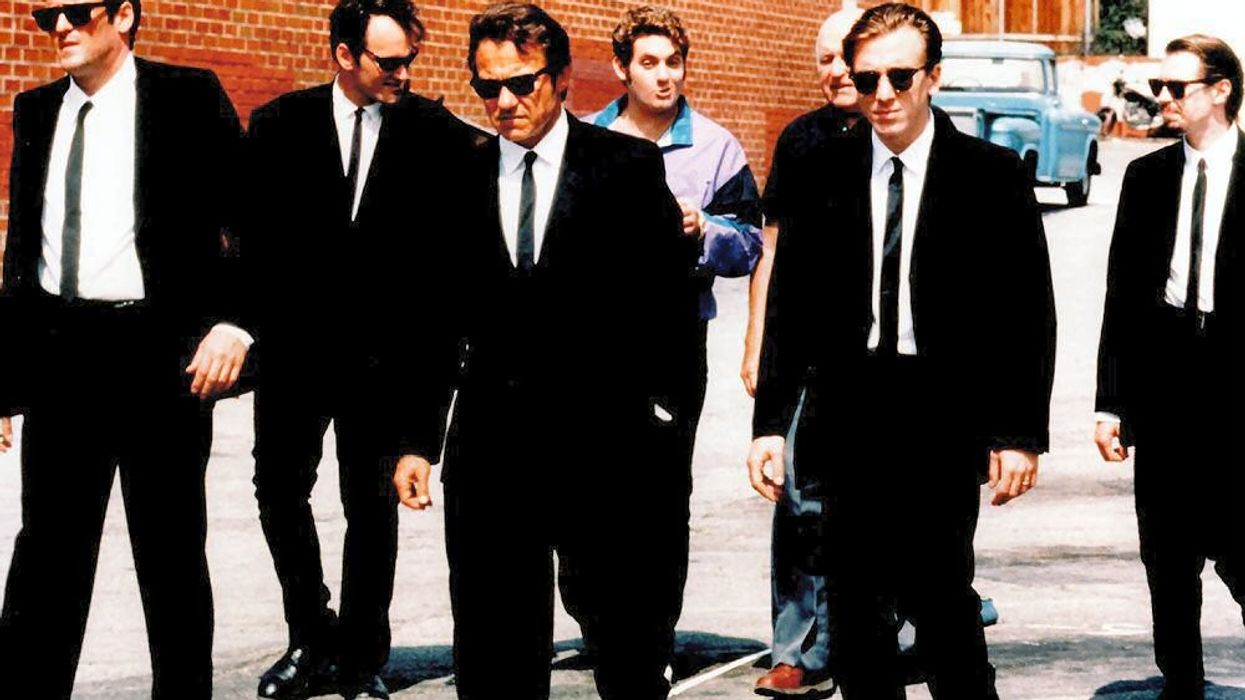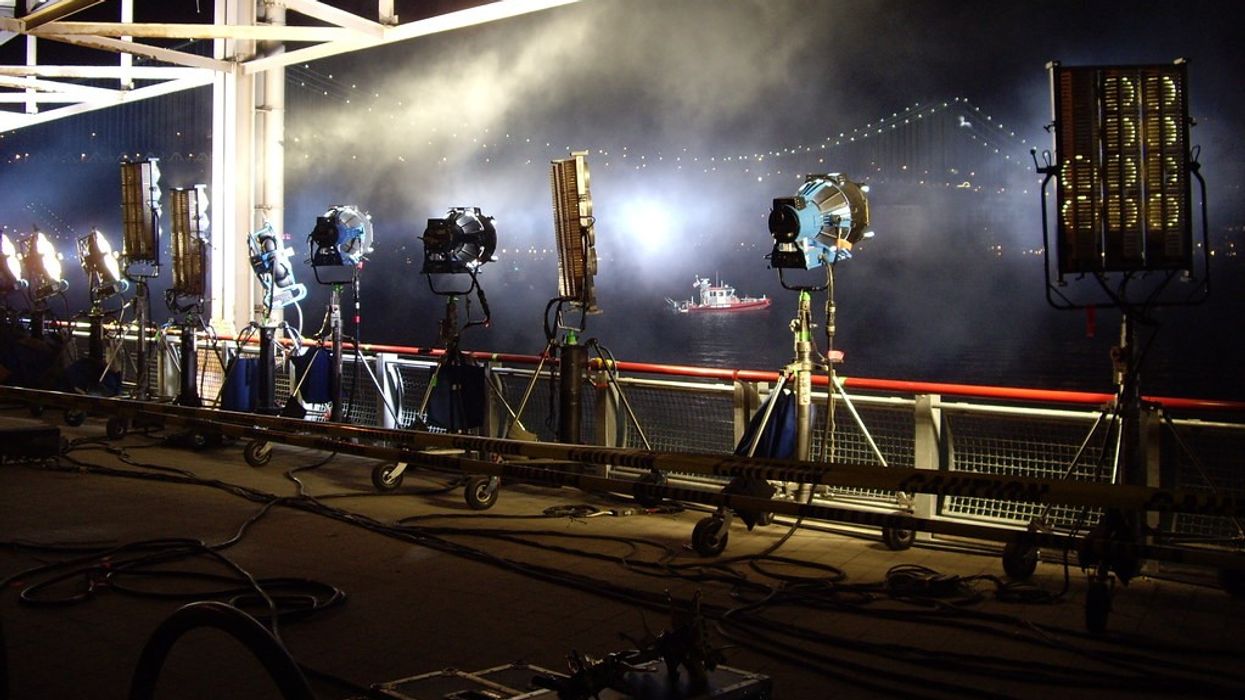Unlocking the Crime and Gangster Genre (Definitions and Examples)
The crime genre has been steady since it debuted. So what gives these kinds of movies and TV shows their lasting power?

'Reservoir Dogs'
The crime genre of film and television is so ever-present that it's hard to imagine a time without it. And also, sort of impossible. All entertainment has always been focused on the good and bad, and the truth is, this genre is as old as time.
Today, I want to dig into the genre, talk about tropes, history, and dig into the best examples in film and TV.
So, let's rob some banks...figuratively speaking.
History of the Crime Genrewww.youtube.com
Unlocking the Crime Genre in Film and TV
Let's talk a little about the inception of the genre and how it became part of the cultural lexicon.
Crime Genre definition
The crime genre is a literary, cinematic, and artistic genre that revolves around stories of criminal activities, law enforcement, investigation, and the overall world of crime. It focuses on exploring the motives, methods, and consequences of criminal behavior, as well as the efforts of law enforcement and individuals to solve crimes and bring criminals to justice.
History of the Crime Genre
In 1903, The Great Train Robbery was one of the first movies made, and it involved bank robbers.
As movies came into their own and talkies began, we saw an influx of crime movies. The noirs of the late 30s and 40s brought the genre to a peak. These gangster films like the original Scarface and Public Enemy were classics.
However, the introduction of the Hays Code made it harder for these films to be made.
What was The Hays Code?
The Hays Code was the name for The Motion Picture Production Code. It was adopted in 1930 but not enforced until 1934. The Code was a set of rules governing American filmmaking. It governed the morals within movies until the 1960s.
The code was adopted because of the scandals surrounding famous movie stars which led to a media frenzy.
Studio heads were afraid the government would censor or disband them, so they adopted the Hays Code to voluntarily censor films themselves.
What were the rules of the Hays Code?
According to the book Hollywood V. Hard Core: How the Struggle Over Censorship Created the Modern Film Industryby Jon Lewis, the Hays Code was responsible for the following bans inside movies and television:
- Pointed profanity – by either title or lip – this includes the words "God", "Lord", "Jesus", "Christ" (unless they be used reverently in connection with proper religious ceremonies), "hell", "damn", "Gawd", and every other profane and vulgar expression however it may be spelled;
- Any licentious or suggestive nudity – in fact or in silhouette; and any lecherous or licentious notice thereof by other characters in the picture;
- The illegal traffic in drugs;
- Any inference of sex perversion;
- White slavery;
- Miscegenation (sex relationships between the white and black races);
- Sex hygiene and venereal diseases;
- Scenes of actual childbirth – in fact or in silhouette;
- Children's sex organs;
- Ridicule of the clergy;
- Willful offense to any nation, race or creed;
And be it further resolved, that special care be exercised in the manner in which the following subjects are treated, to the end that vulgarity and suggestiveness may be eliminated and that good taste may be emphasized:
- The use of the flag;
- International relations (avoiding picturizing in an unfavorable light another country's religion, history, institutions, prominent people, and citizenry);
- Arson;
- The use of firearms;
- Theft, robbery, safe-cracking, and dynamiting of trains, mines, buildings, etc. (having in mind the effect which a too-detailed description of these may have upon the moron);
- Brutality and possible gruesomeness;
- Technique of committing murder by whatever method;
- Methods of smuggling;
- Third-degree methods;
- Actual hangings or electrocutions as legal punishment for crime;
- Sympathy for criminals;
- Attitude toward public characters and institutions;
- Sedition;
- Apparent cruelty to children and animals;
- Branding of people or animals;
- The sale of women, or of a woman selling her virtue;
- Rape or attempted rape;
- First-night scenes;
- Man and woman in bed together;
- Deliberate seduction of girls;
- The institution of marriage;
- Surgical operations;
- The use of drugs;
- Titles or scenes having to do with law enforcement or law-enforcing officers;
- Excessive or lustful kissing, particularly when one character or the other is a "heavy".
The Hays Code was abandoned in 1965 in favor of the G, PG, PG-13, R, NC-17, and X system which is still around today. It took years to suss out these ratings, but they are still used and based on the viewers' age.
How did the Hays Code effect the Crime Genre?
Since a lot of the lives of gangsters and criminals were not welcome on screen, we got many crime movies that came from the point of view of policemen or the government. There also was the "two paths" trope that showed young guys picking two different lifestyles.
One a gangster and one a cop.
We saw this in movies like Angels With Dirty Faces. This is one of my favorite films. It follows with two kids, James Cagney and Pat O'Brien. One becomes a criminal who is idolized by the "Dead End Kids Gang" on New York's Lower East Side. The other becomes a priest who tries to save his community.
At the end of the movie, O'Brien walks Cagney to his execution. It's awesome.
This trope of bad guys paying the ultimate price was used over and over again to make the main point of the Hays code.
The main effect was that all the bad guys and gals in these movies had to get their comeuppance. That means we could never see the criminal win. To get around these issues, we usually saw the criminals go out in a blaze of glory.
One of the most famous is the ending of White Heat, also starring James Cagney.
Tropes of the Crime Genre
We often see a courtroom scene, gunplay, violence, and ruthless tactics. There are times the law can be seen as good and bad, depending on who you root for and when the movie was released. Movies released with the Hays Code usually show bad guys getting punished for their actions.
Main characters
As mentioned above, we often get to see both sides of the law in these kinds of movies. We get the rise and fall of the criminal juxtaposed against his or her antagonist and their work. Sometimes these are true-life people, like Al Capone, other times just figments.
So, what are these gangsters like as people, or archetypes?
They usually are materialistic, street-smart, megalomaniacal, and can be self-destructive.
They have enemies on both sides of the law. And someone is always coming for their crown. They usually have a close circle of friends they can trust.
Moral code
Even after the Hays code was disbanded, gangster and crime film and TV shows had codes. You usually never want to be a rat, an informant, or go against the family. These types of anti-heroes can be seen as doomed souls like their fall is inevitable.
They are often tied closely to the American dream.
Think about how many gangster movies are about immigrants or people who grew up poor?
Kinds of crime
These movies can follow robbers, murderers, gangsters, gangs, hoodlums, car thieves, drug dealers, and con artists.
Locations
Night clubs, secret lairs, seedy bars, prisons, boxing matches, places with neon signs, museums, and even exotic locales.
Genre mashups
The gangster sub genre has always been fruitful as a drama. But it works with comedies as well. More and more we see gangster ideas put into other genres. You have Mafia! which is a spoof film and pure comedy. But from Dusk til Dawn is a horror movie and crime movie all at once as well.
What about on tv?
A show like Barry treads the line between comedy and drama. But it's also a crime show at its heart.
these are all fresh takes on the genre and deepen the way we look at crime and gangsters within film and television.
Examples in film
The crime genre in film spans generations. Unlike the western, the crime genre never really went away. It often reinvents itself for the new era or decade. The advent of technology allows for more interesting and diverse stories and modern iterations can show criminals winning over and over again.
This year saw the breakout hit Hustlers putting its pole-spin on the genre.
Where before we saw a male-dominated arena, this movie took on a true story of women committing a crime to a ton of success.
Still, nostalgia also plays a big part in the filmic version of these tales. That's why a movie like The Untouchables stands the test of time.
Aside from being about Al Capone, it contains a memorable score and lots of memorable set pieces. Like the gangster movies of old, it has its Cain and Abel formula of lawman versus Capone.
Lastly, some directors define themselves for how they handle these kinds of movies.
And no one is better than Martin Scorsese.
I wanted to highlight Casino here because it's an interesting spin on the crime and gambling movie. This time we take the side of the house. We want the Casino to keep winning and stealing. and when people cheat us, we want them to pay.
And it's not just dramas.
The genre is so prevalent and its tropes are so well known that it can even fit into a romantic comedy like Mickey Blue Eyes.
This movie plays off casting pillars of the rom-com and mafia genres against each other to create a mashup that has everyone laughing.
Examples in television
The crime genre in television is a relatively new endeavor. We've always had TV shows about different sides of the law, but the rise in cable and now streaming has allowed us to tackle new and exciting stories.
Especially within the drug world.
A show like Narcos can take the best parts of fictional drama and blend it with real adversaries like Pablo Escobar from season to season.
While rooted in the mafia movies we love, this gives new weight and storytelling to different voices.
And what about a comedy?
Good Girls tackles these kinds of problems from week to week with laughs.
Of course, it would be insane not to mention TV's most famous crime family and show The Sopranos. HBO is credited with reviving this genre and proving it could work on TV by mashing it up with a family drama.
The same year Analyze This came out in theaters, The Sopranos took an eerily similar logline and changed television forever. These guys knew about mafia movies and pop culture, and they leaned into it.
Of course, nostalgia reigns here as well.
A show like Boardwalk Empire stays within the traditional tropes and harkens back to the old days all with Scorsese's guiding hand. It had everything we expect from the story and still managed to surprise us with how deep and merciless it could be.
What's next? Learn TV and Film Genres.
Film and TV genres affect who watches your work, how it's classified, and even how it's reviewed. So how do you decide what you're writing? And which genres to mash-up? The secret is in the tropes.
Click to examine deeper!











